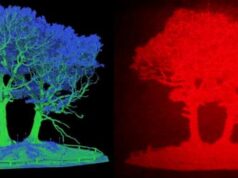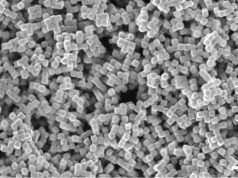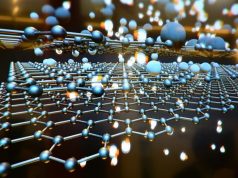The maser (microwave amplification by stimulated emission of radiation), the older microwave frequency sibling of the laser, was invented in 1954. However unlike lasers, which have become widespread, masers are much less widely used because in order to function they must be cooled to temperatures close to absolute zero (-273°C).
However, this new study from Imperial College London and UCL, and published in Nature, reports for the first time a maser that can act continuously at room temperature.
Lead researcher Dr Jonathan Breeze, from Imperial’s Department of Materials, said: “This breakthrough paves the way for the widespread adoption of masers and opens the door for a wide array of applications that we are keen to explore. We hope the maser will now enjoy as much success as the laser.”
In 2012, scientists demonstrated that a maser could operate at room temperature using the organic molecule pentacene. However, it only produced short bursts of maser radiation that lasted less than one thousandth of a second. In any case, had the maser operated continuously, the crystal would likely have melted.
Now, Dr Breeze and colleagues have used a synthetic diamond grown in a nitrogen-rich atmosphere to create a new maser that operates continuously.
Find your dream job in the space industry. Check our Space Job Board »
Carbon atoms were ‘knocked out’ from the diamond using a high energy electron beam, creating spaces known as ‘vacancies’. The diamond was then heated, which allowed nitrogen atoms and carbon vacancies to pair up, forming a type of defect known as a nitrogen-vacancy (NV) defect centre. The diamond was provided by Element Six.
Scientists use diamond in world’s first continuous room-temperature solid-state maser
The diamond is held inside a sapphire ring and illuminated by 532-nm green laser. The red light is fluorescence from the NV centres. Credit: Thomas Angus, Imperial College London
When placed inside a ring of sapphire to concentrate the microwave energy, and illuminated by green laser light, the researchers found that the maser worked at room temperature and importantly, continuously.
Co-author Professor Neil Alford, also from Imperial’s Department of Materials, said: “This technology has a way to go, but I can see it being used where sensitive detection of microwave radiation is essential”.
The team who made the discovery say masers could be used in a range of applications such as medical imaging and airport security scanning. They have more traditionally been used in deep space communication and radio astronomy.
As well as medical imaging and airport security scanning, masers could play a pivotal role in improving sensors to remotely detect bombs, new technology for quantum computers, and might even improve space communication methods to potentially find life on other planets.
Provided by:
Imperial College London
More information:
Jonathan D. Breeze et al. Continuous-wave room-temperature diamond maser, Nature (2018). DOI: 10.1038/nature25970
Image:
A diamond containing nitrogen-vacancy (NV) defects centres is illuminated by a 532-nm green laser. The red light because the NV centres fluoresce.
Credit: Jonathan Breeze, Imperial College London











